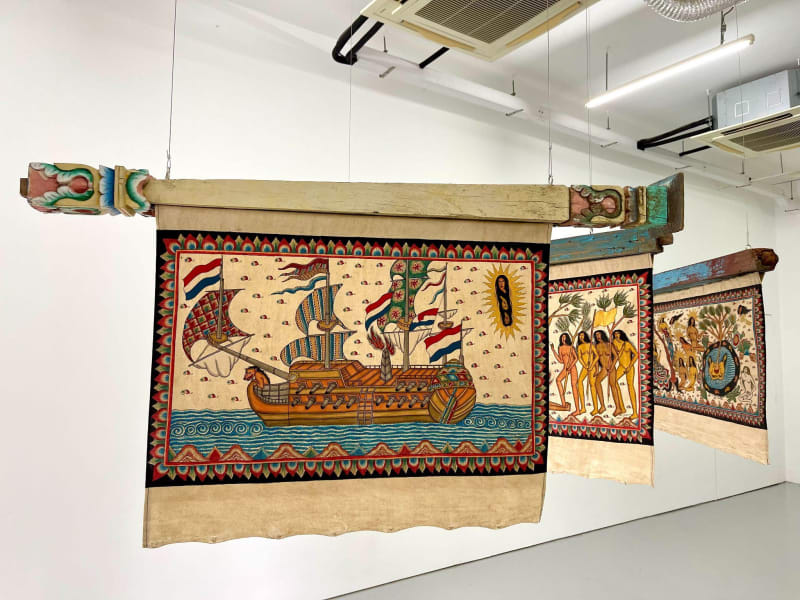New Works presents artworks by Hoo Fan Chon (Malaysia), Citra Sasmita (Indonesia) and Vuth Lyno (Cambodia) as part of the first cycle of SEA AiR – Studio Residencies for Southest Asian Artists in the European Union, a pioneering programme supported by the European Union that fosters artistic development and cultural encounters between Southeast Asia and Europe. Ranging from installation and video to sculpture and painting, these artworks convey their respective engagement with the sociocultural implication of food, empowerment of women, and resilience of marginalised communities.
The artistic practice of Citra Sasmita revisits ancient mythologies and revives tradi- tional artistic techniques and materials to question historical misconceptions and misrepresentations that persist in Balinese society, especially with regard to the status of women. The residency at WIELS enabled the artist to research the legacy of her ancestors in European archives and museum collections—built during the colonial era by often dubious and unethical means—and to produce the eighth chapter of her long- term project Timur Merah (The East is Red).
Timur Merah Project VIII: Pilgrim, How You Journey is a two-part work featuring an installation and a double-channel video. Eight antique carved wooden pillars float mid-air, each adorned by a painting. They are arranged in a star-shaped configuration that references ancient cosmologies and the nine kingdoms of Bali, with the Klungkung kingdom symbolically at the centre of the installation. The vivid imagery of this painting series unfolds complex narratives inspired by the life of I Dewa Agung Istri Kanya, the daring and undaunted Queen of Klungkung who opposed the Dutch through military struggle and cunning diplomatic manoeuvring in the mid-19th century.
The series starts off with a Dutch warship rigged with batik sails to suggest the possibility of a peaceful encounter between the two civilisations. Brutal Hindu rituals, such as the widow’s sacrifice on the husband’s funeral pyre, are juxtaposed to the violence inflicted by the Dutch upon Balinese women. Dressed in a black and white cloth, the Queen makes her appearance from the third painting onwards, first leading the armed resistance in the battle of Kusamba (1849) and then requiring the Dutch to offer a one-horned rhinoceros to stop her subjects from committing mass suicide. The elaborate scenes in the two following paintings are representations of Hell and Heaven drawn from the Bhima Swarga, a Hindu epic evoked by the Queen in her anti-Dutch propaganda. The last painting illustrates the abominable trade of slaves which entailed the massive deportation of Balinese people, including a great number of women, to other Dutch colonies.
Creative Trajectories -
Date: Wednesday, 11 January 2023
Time: 6.00 – 7.30pm
Artist talk by Hoo Fan Chon (Malaysia), Citra Sasmita (Indonesia) and Lyno Vuth (Cambodia)

